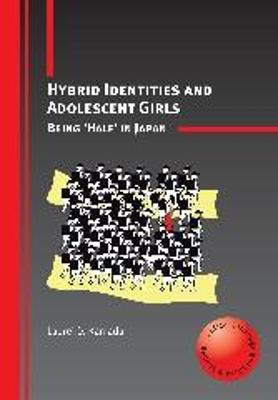Representing Mixed Race: Beyond “What are you?”Posted in Articles, Arts, Asian Diaspora, Autobiography, Media Archive, United States on 2013-06-06 17:24Z by Steven |
Representing Mixed Race: Beyond “What are you?”
Talking Race: A Digital Dialog
2013-05-28
Laura Kina, Vincent DePaul Associate Professor of Art, Media and Design
DePaul University
My 2011-12 oil paintings Issei, Nisei, Sansei, Yonsei, and Gosei are on view in “Under My Skin: Artists Explore Race in the 21st Century” at the Wing Luke Museum of the Asian Pacific American Experience in Seattle May 10-November 17, 2013. The Japanese language titles mark the first, second, third, fourth, and fifth generations from my father’s lineage to live in the United States.
Issei is a ghostly indigo blue portrait of my great grandmother, who came in 1919 through the “picture bride” system of arranged marriage from Okinawa, Japan to the Big Island of Hawai’i to work on a sugar cane plantation in Pi’ihonua (near Hilo). Her image flickers in front of a row of female sugar cane workers dressed in protective work clothes made from repurposed kasuri kimono fabrics. Nisei features a similarly blue tinged portrait of my grandmother in front of a steamship, the Kamakura Maru, circa 1937-39 when she was sent back to Okinawa for high school. Sansei is a sepia toned image based on my mom and dad’s engagement photo from 1968. Next to their image is a colorful patchwork quilt made from vintage Aloha shirts. Yonsei features my own black and white wedding portrait rendered on top of an auspiciously celebratory red enameled background. I wore a white kimono and constructed Japanesque identity and my husband, who is Ashkenazi Jewish, looked like a young Sean Penn in his black tuxedo. Gosei is a portrait of our daughter Midori wearing a Hello Kitty t-shirt, the ubiquitous consumer sign of global Japaneseness. I painted her during the first weeks of September 2012. She is standing on the beach at once a little girl, my baby, and on the cusp of tweendom and about to enter her Hebrew school education. Midori’s expression and the formal composition directly reference the viewer back to Issei while the exaggerated blueness of her eyes and lightness of her skin signal her potential passing into whiteness…
…I identify as hapa (half Asian), yonsei (fourth generation), Uchinanchu (Okinawan diaspora), and more generally and politically as Japanese American, Asian American, and mixed race. I’m also white but in Chicago, where I live, I am usually read as “Latina” but I have yet to embrace a Hispanic identity (I do have a Mexican American stepdaughter though). I live in an urban South Asian/Orthodox Jewish immigrant community. I’m a convert to Judaism, but no one ever guesses I’m Jewish. I don’t look the part. I’m more likely to be mistaken as Indian, vaguely reminiscent of the Bollywood movie actress Preity Zinta. My father is Okinawan and grew up on a sugar cane plantation on the Big Island of Hawai’i and my mother is from Kingston, Washington, where her family ran a roadside motel near the Kingston ferryboat landing. Her mom was a seamstress from a Basque-Spanish agricultural family and she grew up speaking Spanish in Vallejo, California. Her father was French, English, Scotch-Irish, and Dutch heritage (aka “white”) and hailed from Wacko, Texas, by way of cotton fields in Tennessee. He was a descendent of James Knox Polk, the eleventh president of the United States, as well as Major General George Pickett, whose infamous charge was the last battle of Gettysburg. Sometimes I think it’s funny that I’m simultaneously eligible to claim membership as a Daughter of the American Revolution and to throw my lot in history as a descendent of a Japanese “picture bride.”…
Read the entire article here.

